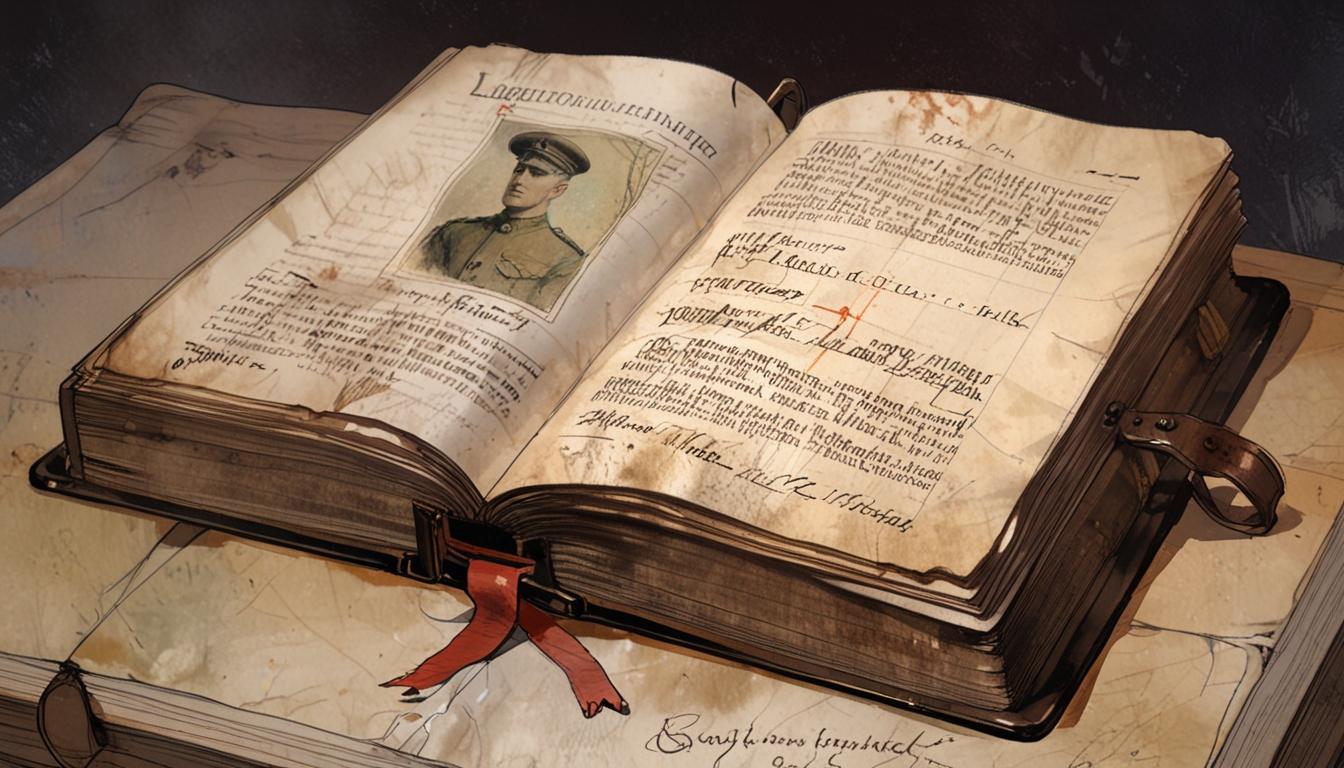A recent discovery at an Oxfam shop in Norwich has sparked a poignant quest to uncover the history of a soldier who served in the First World War. The story began with a large, leather-bound Bible, donated to the shop, which contained an inscription dedicated to Lieutenant Adrian Harry Stewart. This striking find prompted volunteer Sarah Gosling, 58, to delve into the life of the man who had once owned it.
Lieutenant Stewart, who tragically lost his life in August 1914, was the youngest son of Colonel Harry Stewart from Hopton Hall, Norfolk. He served with the Gloucestershire Regiment and later with the Nigeria Regiment, where he was killed during an engagement in Garua, Nigeria. As it stands, he has no known grave; his name is inscribed at the Calabar Memorial in Nigeria, which commemorates those lost in that theatre of war. Lt Stewart's life, encapsulated in his Bible, unfolds against a backdrop of youthful bravery, cut short by the ravages of conflict.
After discovering the Bible, Gosling expressed her emotions, stating: "We were quite moved by it in the shop, and I wanted to find out more." Her curiosity led her to contact Reverend Nigel Lacey at St Margaret’s Church in Hopton, a community institution known for its historical significance and beautiful stained glass from William Morris and Company. The church, where the Bible was once housed, is located not far from the site of the Hopton War Memorial, which commemorates local soldiers lost in the World Wars, including Stewart.
The Bible's journey from the church remains a mystery. It is unclear how it came to be in the Oxfam shop or if there are living descendants of Lt Stewart who might hold more insight into his legacy. Reverend Lacey confirmed that the Bible had been a part of the church's possessions, enhancing the sense of loss surrounding its absence.
In an effort to resolve the mystery, Gosling returned the Bible to its rightful place in the church on May 1, where it was duly placed back on the lectern for use during prayers at the Sunday service. "I’m unaware if there are any living relatives or if anyone knows why the Bible left the church. It would be very interesting to find out more about this Bible's story," she shared.
The church’s community has been drawn into the intrigue, with many wanting to learn about Lt Stewart and the circumstances of his service and ultimate sacrifice. St Margaret's Church stands testament to the local history, not only through its architecture but also its role in preserving the memory of those who served during the Great War.
As this story continues to unfold, it reflects a broader narrative of remembrance—one that ties together personal histories with collective memory, reminding us of the sacrifices made by individuals like Lt Adrian Harry Stewart in the course of history. The resurrection of this Bible may well lead to renewed discussions about the significance of commemorating those who served, encouraging the community to connect past events with the present.
In the era of growing global conflicts and complexities, the story of one soldier, whispered through the pages of a forgotten Bible, may help shed light on the sacrifices made in the name of duty, valor, and remembrance.
Reference Map
- Paragraph 1: [1]
- Paragraph 2: [2]
- Paragraph 3: [1], [3]
- Paragraph 4: [1], [4]
- Paragraph 5: [1]
- Paragraph 6: [1], [3], [5]
- Paragraph 7: [1], [2], [3]
- Paragraph 8: [1], [2]
Source: Noah Wire Services
